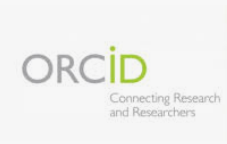[RETRACTED]Transmission by COVID 19 in a health area of Santiago de Cuba
Keywords:
COVID-19, epidemiology, epidemic, transmissionAbstract
[RETRACTED]
This paper has been RETRACTED because the authors have been found to have engaged in PLAGIARISM.
Downloads
Published
How to Cite
Issue
Section
License
Copyright (c) 2024 Marileydis Avila Velazquez, Naifi Hierrezuelo Rojas Rojas, Osvaldo Borrero Cobas, Lourdes Marbelys Marbelys Velazquez Ferreira

This work is licensed under a Creative Commons Attribution-NonCommercial 4.0 International License.
La Revista Cubana de Higiene y Epidemiologia protege los derechos de autor, y opera con una Licencia Creative Commons 4.0.(Licencia Creative Commons Atribución-No Comercial 4.0 Internacional (CC BY-NC 4.0).Al publicar en ella los autores permiten copiar y redistribuir el material en cualquier medio o formato; remezclar, transformar y crear a partir del material. Debe reconocer adecuadamente la autoría, proporcionar un enlace a la licencia http://creativecommons.org/licenses/by-nc/4.0/ e indicar si se han realizado cambios. No puede utilizar el material para una finalidad comercial. No hay restricciones adicionales.
Los autores autorizan la publicación de sus escritos conservando los derechos de autoría, y cediendo y transfiriendo a la revista todos los derechos protegidos por las leyes de propiedad intelectual que rigen en Cuba, que implican la edición para difundir la obra.
Los autores podrán establecer acuerdos adicionales para la distribución no exclusiva de la versión de la obra publicada en la revista (por ejemplo, situarla en un repositorio institucional o publicarla en un libro), con el reconocimiento de haber sido publicada primero en esta revista.




